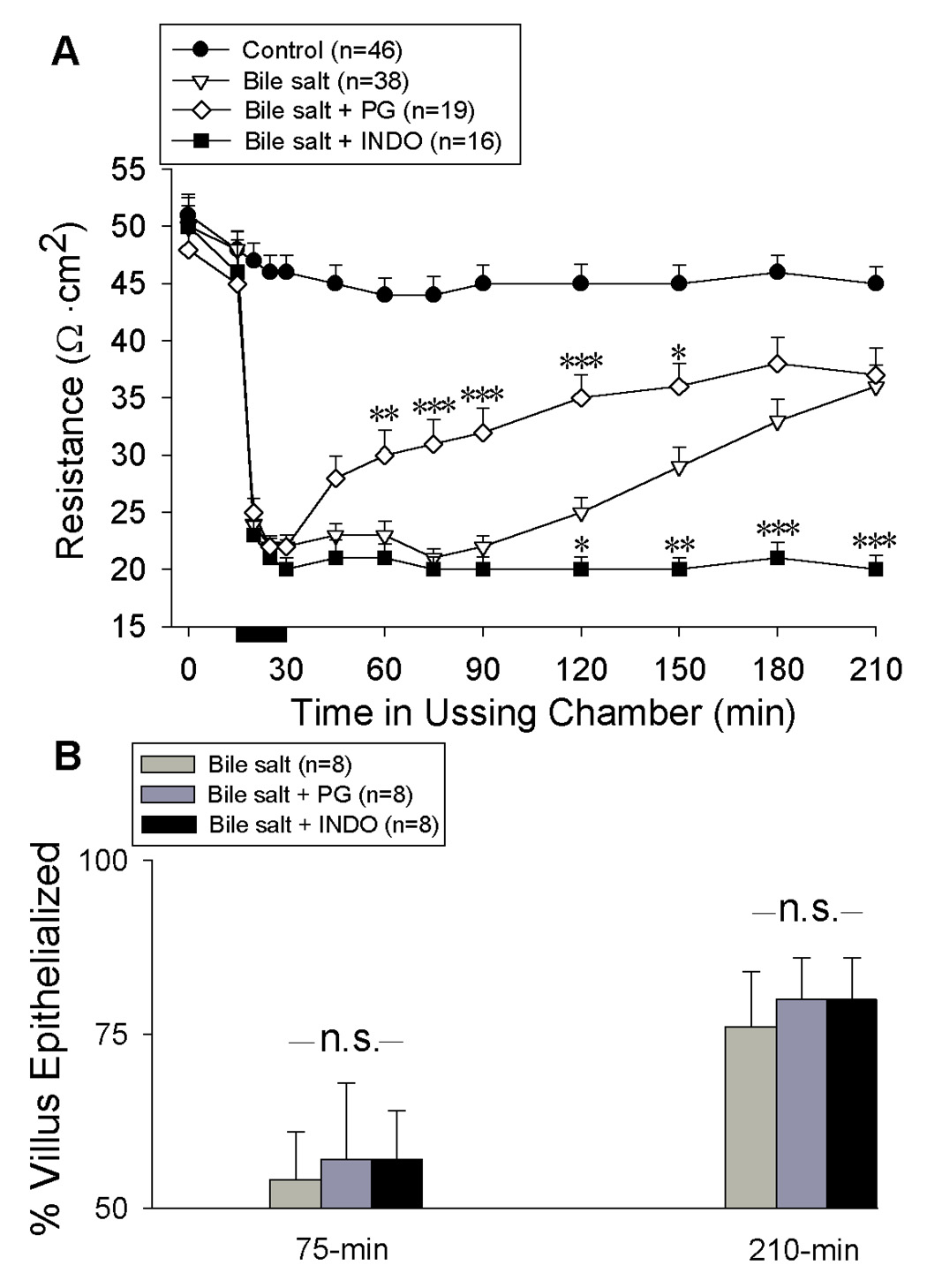Figure 3.

Recovery of transepithelial electrical resistance (A) and restitution (B) of Ussing chambered porcine ileal mucosa after deoxycholate injury and treatment with exogenous prostaglandins (PG) or indomethacin (INDO). PGE2 (10−6 M) and prostacyclin (10−6 M) or INDO (5×10−6M) were added immediately after injury and prior to onset of repair (time = 30-min). (A) INDO abolished recovery of TER while addition of exogenous PG resulted in an early elevation in TER that did not exceed baseline recovery at 210-min (✱ p<0.05 ✱✱ p<0.01 and ✱✱✱ p<0.001 –vs- injured control; one-way ANOVA). (B) Percent epithelialization of villi are shown at timepoints corresponding to maximal effects of exogenous PG (75-min) and INDO (210-min) on recovery of TER. Values represent mean ± SE; n= number of pigs; n.s. = not statistically significant.
